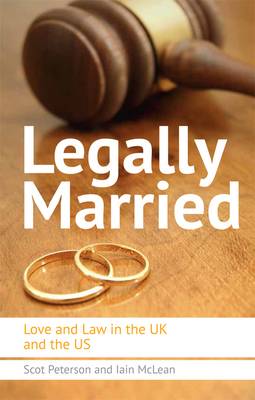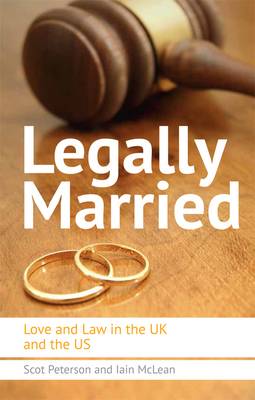
- Afhalen na 1 uur in een winkel met voorraad
- Gratis thuislevering in België vanaf € 30
- Ruim aanbod met 7 miljoen producten
- Afhalen na 1 uur in een winkel met voorraad
- Gratis thuislevering in België vanaf € 30
- Ruim aanbod met 7 miljoen producten
Zoeken
€ 162,95
+ 325 punten
Omschrijving
What does it really mean to be legally married? The answer seems to vary depending on the cultures, religions and laws of different countries. From English teenagers eloping to Gretna Green to tie the knot without their parents' permission, to whether a wife can own property, it's clear that marriage law is different depending on where you live and when. Now, the main debate centres on whether the law should be changed so that same-sex couples can marry. The Scottish and UK governments, plus a number of US states, are to legislate to allow same-sex marriage, prompting both celebration and outrage. But amongst all the assumptions, there are few facts, and the debates about same-sex marriage in the UK and the US are taking place in an informational vacuum filled with emotion and rhetoric. 'Legally Married' combines insights from history and law from the UK and Scotland with international examples of how marriage law has developed. Scot Peterson and Iain McLean show how many assumptions about marriage are contestable on a number of grounds, separate fact from fiction and explain the claims made on both sides of the argument over same-sex marriage in terms of their historical context.
Specificaties
Betrokkenen
- Auteur(s):
- Uitgeverij:
Inhoud
- Aantal bladzijden:
- 192
- Taal:
- Engels
Eigenschappen
- Productcode (EAN):
- 9780748683772
- Verschijningsdatum:
- 25/10/2013
- Uitvoering:
- Hardcover
- Formaat:
- Genaaid
- Afmetingen:
- 140 mm x 218 mm
- Gewicht:
- 476 g

Alleen bij Standaard Boekhandel
+ 325 punten op je klantenkaart van Standaard Boekhandel
Beoordelingen
We publiceren alleen reviews die voldoen aan de voorwaarden voor reviews. Bekijk onze voorwaarden voor reviews.











